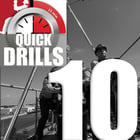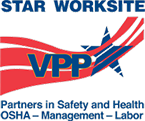“Up untilnow, requesting or researching OSHA Letters of Interpretation or checking with other safety professionals was the means to get a clearer picture of ‘how’ to accomplish safe and compliant confined space entry. NFPA's Guide for Safe Confined Space Entry (NFPA350) helps to bridge that area from regulation to compliance. It is a ‘must have’ resource for safety professionals, confined space owners/workers and rescuers as well,” states, Dennis O'Connell, Director of Training for Roco Rescue, who served as an alternate committee member for NFPA 350.
Here's more from NFPA on their new guide...
Every year, confined space incidents result in worker deaths, injuries, and serious illnesses. The danger is widespread because all facilities can have confined spaces - from commercial buildings and hospitals to public works, utilities, and chemical/industrial facilities. By U.S. law, employees must comply with applicable regulations such as OSHA's 29 CFR 1910.146 and 29 CFR 1926 Subpart AA to ensure personnel safety. However, these regulations tell you 'what' to do, not 'how' to identify, evaluate, and control confined space hazards or conduct rescue response.
NFPA has just introduced NFPA 350: Guide for Safe Confined Space Entry and Work. This all-new guide is essential for anyone who enters confined spaces, along with facility managers, code officials, and safety personnel. NFPA 350 explains how to protect workers who enter into confined spaces for inspection or testing, or to perform associated work. Provisions address the full range of special hazards, including those present in water treatment, petrochemical, and agricultural facilities. It provides information to assist companies that need to comply with OSHA's Permit-Rquired Confined Spaces (29 CFR 1910.146) among other standards. In addition, NFPA 350 helps fire service and emergency services personnel develop and evaluate plans for confined space rescue in conjunction with NFPA 1670: Standard on Operations and Training for Technical Search and Rescue Incidents.
This guide will help you be prepared to recognize, evaluate, and control confined space entry hazards. Follow practices developed by experts for:
- • Identification of Confined Spaces
- • Evaluation of Hazards
- • Atmospheric Monitoring
- • Hazard Elimination and Control
- • Ventilation
- • Rescue and Rescue Planning
- • Confined Space Personnel Duties, Responsibilities, and Competencies
- • Pre-Entry Evaluation Forms and Permits
- • Management of Change
- • Prevention Through Design
- • OSHA Alternate Entry Procedures and Reclassification (Annex C)
As an added note, NFPA 350 looks at all confined spaces from a different prospective- i.e., all spaces are treated as "permit required" until it is proven that entry is safe or the proper precautions have been taken. This guide's impact in confined space work and rescue will be significant in reducing risk and meeting compliance issues. For more information, visit NFPA.org.

 now, requesting or researching OSHA Letters of Interpretation or checking with other safety professionals was the means to get a clearer picture of ‘how’ to accomplish safe and compliant confined space entry. NFPA's Guide for Safe Confined Space Entry (NFPA350) helps to bridge that area from regulation to compliance. It is a ‘must have’ resource for safety professionals, confined space owners/workers and rescuers as well,”
now, requesting or researching OSHA Letters of Interpretation or checking with other safety professionals was the means to get a clearer picture of ‘how’ to accomplish safe and compliant confined space entry. NFPA's Guide for Safe Confined Space Entry (NFPA350) helps to bridge that area from regulation to compliance. It is a ‘must have’ resource for safety professionals, confined space owners/workers and rescuers as well,”  “A Trench is a Trench is a Trench”
“A Trench is a Trench is a Trench” In our opinion, the new OSHA regulation for Confined Spaces in Construction (Subpart AA of 1926) was worth the wait! This new standard is well thought out and includes some significant as well as subtle differences from the General Industry Permit Required Confined Space Standard 1910.146.
In our opinion, the new OSHA regulation for Confined Spaces in Construction (Subpart AA of 1926) was worth the wait! This new standard is well thought out and includes some significant as well as subtle differences from the General Industry Permit Required Confined Space Standard 1910.146. Also, several new roles and responsibilities have been added to the confined space regulations. One of the most important new roles is that of the “competent person” for confined spaces.
Also, several new roles and responsibilities have been added to the confined space regulations. One of the most important new roles is that of the “competent person” for confined spaces. 2. Includes more detailed provisions requiring coordinated activities when there are multiple employers at the worksite.
2. Includes more detailed provisions requiring coordinated activities when there are multiple employers at the worksite. It may seem to be a subtle difference in the two standards’ requirements, but now there is a specific role, or an identified position for conducting an evaluation of the worksite to determine the presence of confined spaces, a determination of the known or potential hazards associated with those confined spaces, and that has the authority to eliminate the identified hazards.
It may seem to be a subtle difference in the two standards’ requirements, but now there is a specific role, or an identified position for conducting an evaluation of the worksite to determine the presence of confined spaces, a determination of the known or potential hazards associated with those confined spaces, and that has the authority to eliminate the identified hazards.

 Due to their relative simplicity, belay systems rarely see the dedicated training that is often given to the other elements of rescue, such as mechanical advantage or patient packaging. Just because you can rig a 540 Belay Device or tie a Munter Hitch does not necessarily mean you are proficient in their use.
Due to their relative simplicity, belay systems rarely see the dedicated training that is often given to the other elements of rescue, such as mechanical advantage or patient packaging. Just because you can rig a 540 Belay Device or tie a Munter Hitch does not necessarily mean you are proficient in their use.



